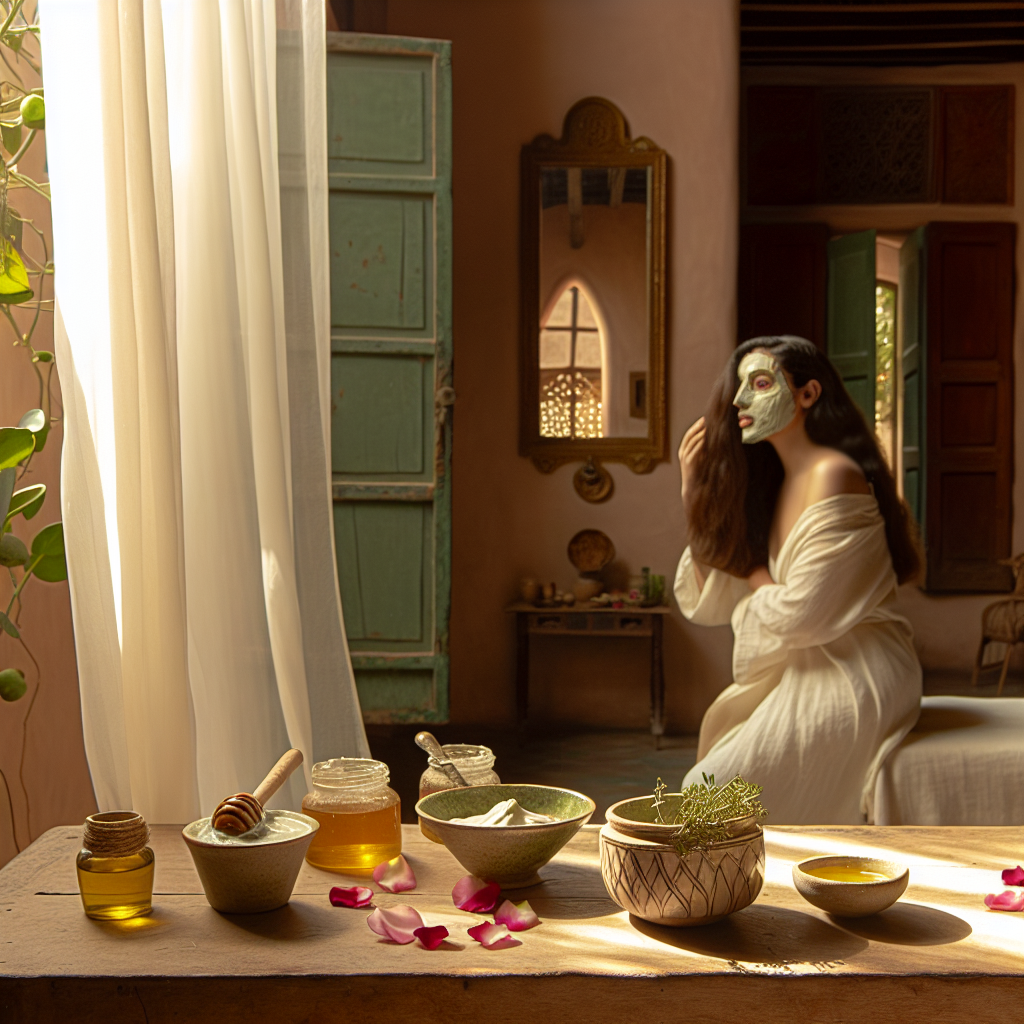Unlocking the Secrets of Ancient Beauty Rituals for Modern Skin Care

Picture this: the ancient Egyptians lounging by the Nile, slathering their faces with honey and clay, while exchanging tips on the best way to make their kohl eyeliner last in the desert heat. Fast forward a millennium or two, and here we are, navigating the aisles at Sephora, seeking that one moisturizer or serum that promises to be our skin’s new best friend. It seems that while we’ve advanced in technology, our quest for beauty secrets remains timeless. The draw of ancient beauty rituals is as strong as ever, and there’s a lot we can learn from those who came long before us.
The Allure of Ancient Ingredients
In a world brimming with synthesized ingredients and flashy marketing, there’s an undeniable charm in the simplicity of ancient beauty practices. Cleopatra was a big fan of donkey milk baths, and it turns out she was onto something. Modern research shows that lactic acid a key component of milk has potent exfoliating and moisturizing properties. It gently sloughs off dead skin cells to reveal the fresher, more radiant skin beneath.
One day, while testing out a new honey mask I’d concocted with a friend, we found ourselves in a sticky situation literally. But after the laughter subsided, the results were hard to ignore. Honey, used by ancient Greeks and Egyptians, is a natural humectant, meaning it helps retain moisture. It also has antibacterial properties, which can be a game-changer for anyone dealing with pesky breakouts.
Rituals Rooted in Tradition and Nature
Taking a closer look at the rituals themselves, ancient beauty routines were as much about the process as they were about the products. Consider the Japanese tradition of “Keshō,” which involves the layered application of oils, waters, and creams. This ritual has been practiced for centuries and emphasizes the importance of each step in skincare cleanse, treat, hydrate. It’s kind of like a spiritual cleansing for the face, and honestly, who couldn’t use a little more zen in their life?
During a particularly stressful week last fall, I tried incorporating a similar multi-step approach. It became more than skincare; it was a moment of calm in my otherwise chaotic day. And maybe it was the ritual itself, or maybe it was the products, but my skin looked and felt better.
We see a similar appreciation for detailed rituals in the Indian tradition of using turmeric in skincare. Turmeric, with its antioxidant and anti-inflammatory properties, has been a staple in Ayurvedic practices for centuries. Mixing it with yogurt or coconut oil creates a paste that can help brighten skin and reduce scars. I once attempted this at home and, in my eagerness, forgot to wear gloves. My fingers looked like I’d been picking saffron for days. But the soft, glowing skin was worth the temporary hand-painting.
Modern Science Meets Ancient Wisdom
The marriage between ancient ingredients and modern science is where things get particularly exciting. Take rose water, for instance. Once considered a luxury in ancient Persia, rose water is now a staple in many skincare products due to its soothing and anti-inflammatory properties. In a study published in the “Journal of Clinical and Aesthetic Dermatology,” rose water was found to decrease irritation and redness, making it a great option for sensitive skin.
And let’s talk about charcoal. Used in ancient Ayurvedic and Egyptian medicines, charcoal has made a comeback in recent years. Activated charcoal, with its porous surface, works like a magnet to draw out impurities and toxins from the skin. I’ve been using a charcoal-infused face wash for about a year now, and though the gray lather isn’t the most attractive, my complexion feels clearer and more balanced.
It’s not just about ingredients, either. The ancient practice of face massage think gua sha or jade rolling is being backed by contemporary studies for its benefits in promoting circulation and reducing puffiness. Dr. Lamees Hamdan, a dermatologist and founder of Shiffa Beauty, often speaks on this, pointing out that these techniques can enhance lymphatic drainage, leaving your skin looking sculpted and refreshed.
But perhaps what’s most fascinating is how these ancient practices encourage us to listen to our skin. In a society obsessed with quick fixes and instant results, the patience inherent in these rituals can teach us a lot about self-care. It’s a gentle reminder that beauty isn’t just about what you put on your skin, but also about how you treat it.
Debunking Myths and Embracing Tradition
Of course, not every ancient ritual should be blindly embraced. Some practices, like using lead-infused powders in ancient Rome, are best left in the past. It’s crucial to approach these traditions with a discerning eye and a respect for modern scientific understanding.
But there’s something undeniably human about our collective search for beauty. It transcends time and culture, connecting us to our ancestors in a most personal way. As we sift through the myriad of options, perhaps the biggest takeaway is a blend of old and new a respect for the time-tested wisdom of the past, tempered with the advancements of today.
The beauty industry is ever-evolving, yet some things remain constant. Our desire for radiant, healthy skin is as ancient as civilization itself. So, whether you’re lounging in a milk bath like Cleopatra or layering on your serums in a nod to Japanese beauty routines, remember that you’re part of a long and storied tradition. Maybe, there’s more to these ancient secrets than we initially thought.


